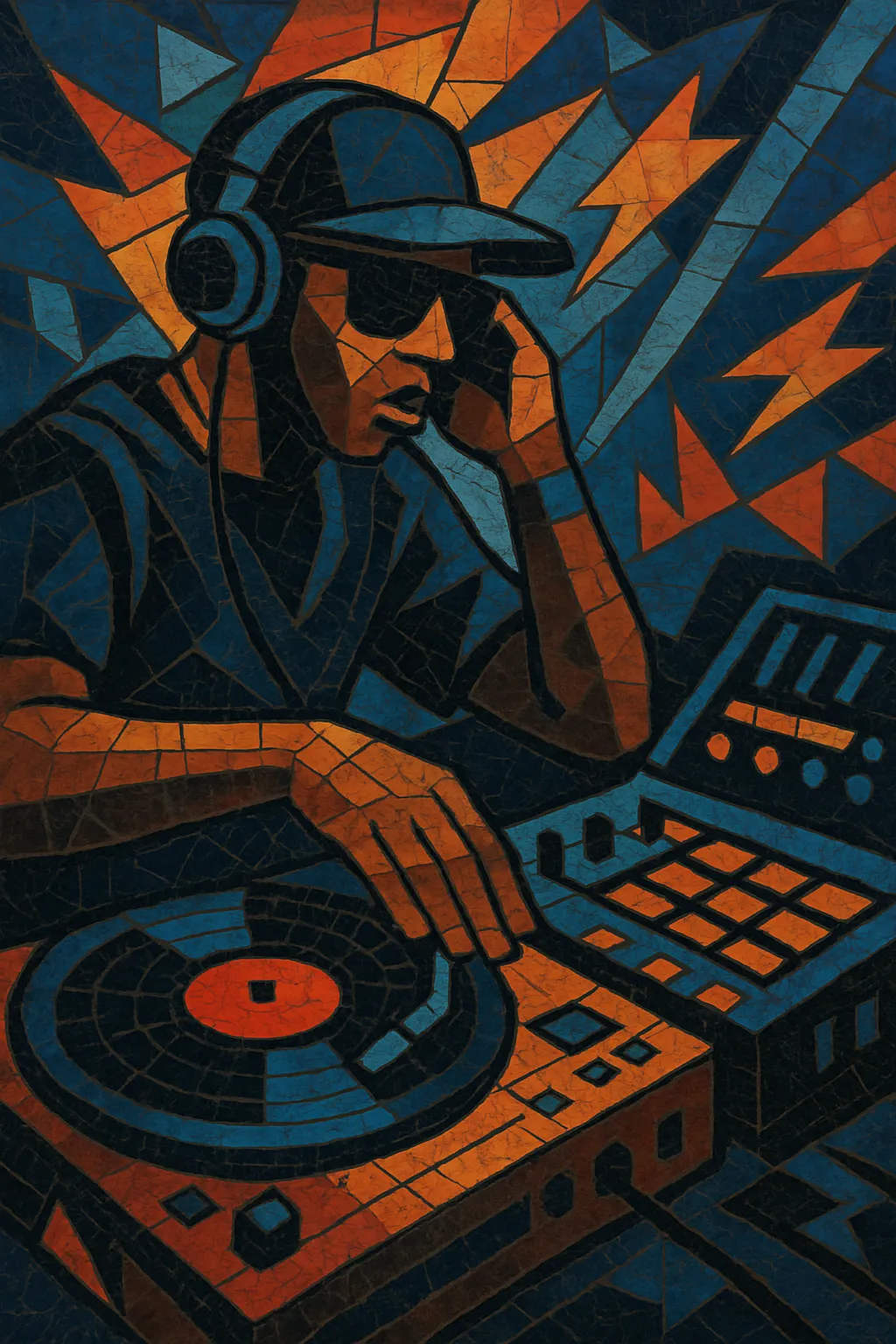
Electro hop is an early fusion of hip hop MCing and DJ culture with the synthetic, machine-driven rhythms of 1980s electro and electro‑funk. It is characterized by prominent Roland TR‑808 drum programming, sequenced synth basslines, robotic vocoder/talkbox vocals, and scratching.
Built for breakdancing and block parties, electro hop favors crisp, syncopated drum patterns, futurist textures, and chant‑style hooks over dense harmony. It often uses call‑and‑response raps, minimalist minor‑key vamps, and electronic sound design inspired by Kraftwerk and post‑disco club music.
The style flourished in the early–mid 1980s in the United States (notably New York and Los Angeles), laying crucial groundwork for Miami bass, freestyle, Detroit techno, and the electro‑leaning side of West Coast hip hop.
Electro hop emerged in the United States as hip hop's MC/DJ format intersected with electronic dance music technologies and post‑disco club culture. DJs and producers adopted drum machines (especially the Roland TR‑808), step sequencers, and affordable polyphonic synthesizers to craft machine‑tight grooves suitable for breakdancing. Kraftwerk’s robotic minimalism and American funk/electro‑funk (P‑Funk’s synth leads and boogie’s slick drums) strongly shaped the sound.
The watershed moment arrived with Afrika Bambaataa & the Soulsonic Force’s “Planet Rock” (1982), which blended Kraftwerk motifs, 808 beats, and rap. A wave of records followed: Newcleus (“Jam On It”), Hashim (“Al‑Naafiysh”), Man Parrish (“Hip Hop, Be Bop”), Jonzun Crew, Warp 9, and Twilight 22. On the West Coast, The Egyptian Lover, Arabian Prince, and party crews such as Uncle Jamm’s Army pushed a sleeker, club‑forward variant. Mantronix introduced more intricate sequencing and sample stabs, while Herbie Hancock’s “Rockit” (with GrandMixer D.ST) showcased turntablism over electro frameworks.
Electro hop became a soundtrack for b‑boy/b‑girl culture, popping, and locking. Its hard‑edged yet danceable 808 rhythms influenced early Miami scenes (prefiguring Miami bass) and fed into Latin freestyle in New York. The breakbeats and programming approaches informed UK and European scenes that would evolve into breakbeat, rave, and breakbeat hardcore.
By the late 1980s, sample‑centric boom bap and R&B‑infused new jack swing eclipsed electro hop on U.S. charts. Yet its DNA persisted: Detroit techno drew heavily from electro rhythm science; Miami bass amplified its 808 low end; West Coast hip hop retained its electronic polish; and later genres like electroclash, big beat, and certain strands of electro house revived its timbres. Today, producers continue to reference electro hop’s 808 patterns, vocoders, and minimalist synth aesthetics.

